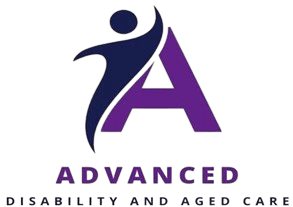Communication is a fundamental human need, yet many people face difficulties with speech due to various disabilities, neurological conditions, or age-related challenges.
Augmentative and Alternative Communication (AAC) devices are essential tools that help these individuals communicate more effectively.
This article explains what AAC devices are, how they work, and specifically how they improve the lives of aged people and those with disabilities by enhancing their ability to connect, express needs, and participate socially.
What is Augmentative and Alternative Communication (AAC)?
AAC refers to methods, systems, or devices used to supplement or replace natural speech for people who have difficulty communicating verbally. It encompasses both unaided systems like gestures and sign language, and aided systems that involve tools or technology. AAC aims to facilitate expression of needs, sharing of ideas, and social interaction for those with limited or no speech ability.
There are broadly three main categories of AAC:
Unaided Communication: This involves non-verbal methods that do not require external tools, such as facial expressions, body language, gestures, and sign language.
Low-Tech Aided Communication: Simple tools like communication boards, picture or symbol cards, and alphabet charts help users form words or messages.
High-Tech Aided Communication: Electronic devices such as tablets, speech-generating devices (SGDs), or specialized apps use text-to-speech technology and other advanced features to create spoken output.
Types of AAC Devices and How They Work
AAC devices range from simple communication boards to sophisticated electronic systems tailored to user needs:
One-Message Communicators: Devices programmed to play a single pre-recorded message, suitable for basic communication such as “help” or “yes.”
Multi-Message Devices: Allow selection between a limited number of messages, enabling users to express a range of basic thoughts.
Speech-Generating Devices (SGDs): High-tech devices that produce synthetic speech using text or symbols selected by the user, often customizable to the user’s vocabulary and preferences.
Wearable AAC Devices: Wearable Augmentative and Alternative Communication (AAC) devices are a growing innovation designed to provide users with quick, portable, and discreet access to communication assistance anywhere. These compact electronic devices are worn on the body—often on the wrist like a smartwatch—enabling people with speech difficulties due to age, disability, or neurological conditions to express themselves conveniently and effectively.
Eye-Tracking and Head-Controlled Devices: For users with limited motor skills, these systems allow message selection via eye movement or head gestures.
Speech-language pathologists and therapists typically assess communication needs and recommend appropriate AAC technology based on abilities, environment, and goals.
How AAC Devices Help Aged People
Aging commonly comes with conditions like stroke, Parkinson’s disease, dementia, and other neurological disorders that impair speech. AAC devices support older adults in numerous ways:
Restoring Voice After Stroke or Injury: After a stroke, many elders experience aphasia (loss or impairment of language). AAC devices enable them to communicate with caregivers and family, reducing isolation and frustration.
Supporting Communication in Neurodegenerative Disorders: For chronic conditions such as Parkinson’s disease or ALS, AAC devices can compensate for progressive speech loss, preserving a person’s autonomy.
Reducing Caregiver Burden: When older adults can express their needs, feelings, and choices via AAC, caregivers are better informed, which improves care quality and reduces misunderstandings.
Enhancing Social Engagement: AAC devices allow aged individuals with speech difficulties to participate in social activities, maintain relationships, and express emotions, contributing positively to mental health.
Facilitating Healthcare Communication: AAC helps older patients convey symptoms, pain, or preferences during medical appointments, enabling more effective treatment decisions.
How AAC Devices Help People with Disabilities
Individuals with developmental disabilities, cerebral palsy, autism spectrum disorder, intellectual disabilities, or acquired injuries often face communication challenges that AAC addresses:
Providing a Voice for Nonverbal Individuals: AAC offers people who cannot speak a way to participate meaningfully in conversations, education, and employment.
Supporting Language Development: For children and adults learning to communicate, AAC systems can supplement speech development and build vocabulary.
Improving Independence: By enabling self-expression, AAC increases the ability of disabled individuals to advocate for themselves and make choices about their daily lives.
Increasing Safety: Clear communication via AAC devices helps users communicate emergencies or urgent health needs.
Promoting Inclusion: AAC enables participation in social, educational, and recreational activities, reducing isolation and improving quality of life.
Benefits Beyond Communication
AAC devices do more than produce speech; they foster connection, dignity, and autonomy. Users gain confidence, reduce frustration from communication barriers, and experience enhanced emotional wellbeing. Family members, educators, and caregivers benefit from clearer understanding and improved relationships.
Conclusion
Augmentative and Alternative Communication devices are transformative tools that empower aged and disabled individuals to overcome speech limitations. They restore independence, improve social participation, and enhance safety and care quality. By complementing or replacing natural speech, AAC systems open avenues for fuller lives, stronger relationships, and greater dignity, making communication a true right accessible to all.
Increasing awareness, tailored solutions, and accessible support for AAC users will continue to improve lives now and into the future.
